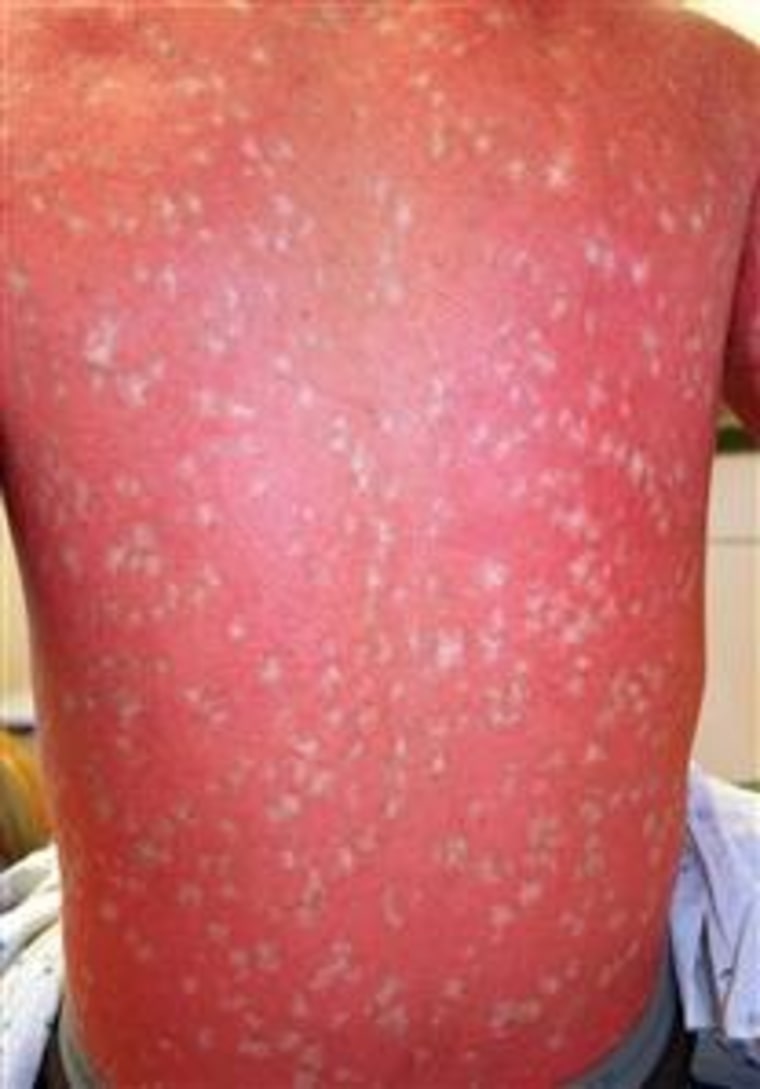A rare skin disease that leaves victims with red, scaly flesh mottled with tiny patches of normal pigment just might hold the secret to curing other genetic disorders, scientists say. Called “ichthyosis with confetti” because of a random sprinkling of normal skin cells, the disease is so unusual it might affect only “a couple dozen” people worldwide, said Dr. Keith Choate, a Yale University dermatologist and research scientist. But the strange ailment may one day show scientists how to silence certain genes that cause disease, said Choate, who with colleagues reported findings in the latest issue of the journal Science Express. In effect, the confetti gene double-crosses the disease gene, forcing it to reverse itself to good health. “One could envision dealing with other conditions caused by dominant gene functions like cancer and imagine taking the defective copy and causing the disease to go away by the same mechanism,” Choate said. First, though, a little about ichthyosis. Named after the Greek word for fish, ichthyosis is usually characterized by the development of extremely thick, scaly skin, or, sometimes, very thin skin. It can lead to severe medical problems like calorie loss, water loss, overheating, blistering and psychological issues related to disfigurement and skin color changes. About 16,000 babies are born who either have or will develop the general condition, far more than ever develop the confetti variety. But it’s the “confetti” in ichthyosis with confetti that intrigued one of Choate’s Yale mentors, Dr. Leonard Millstone, who, Choate recalled, “called me over and said ‘You should see this patient, see what’s happening.’ Practically before his very eyes, he saw a white spot developing." In a study released last week, Choate and colleagues described how they unlocked the secret. In some skin cells, an entire chunk of chromosome 17 that contains the defective gene inherited from one’s parents is replaced from the spot of the bad gene all the way to the end of that arm of the chromosome. The replacement section contains a good copy of the gene, also inherited from parents. Patients with the confetti tend to grow more and more normal patches of skin the longer they live, but while those patches could be called “cured,” and while the increase in normal patches does lessen ichthyosis symptoms somewhat, patients still have ichthyosis and Choate said the benefits are “relatively mild.” Still, Choate said the strange disease offers hope that somehow, other genetic diseases – such as muscular dystrophy or cancer – may be forced to become self-correcting, too. One day, that could be a big payoff of the research. Do you grapple with an annoying skin issue? Do tell. Find The Body Odd on Twitter and on Facebook.
'Confetti' skin disease spoils the party for bad genes
